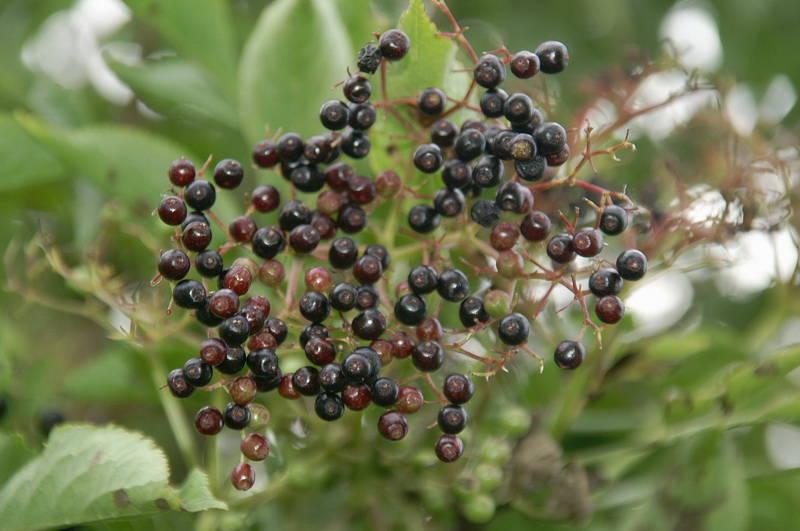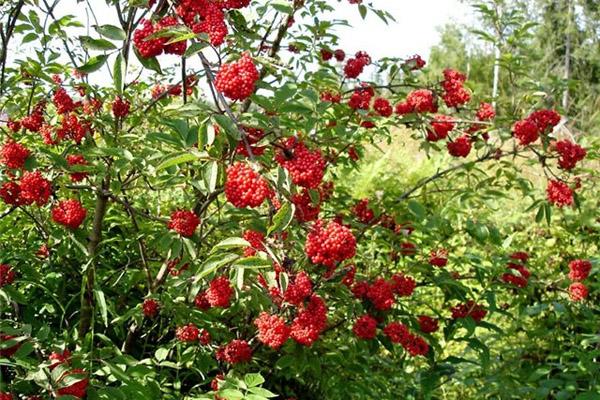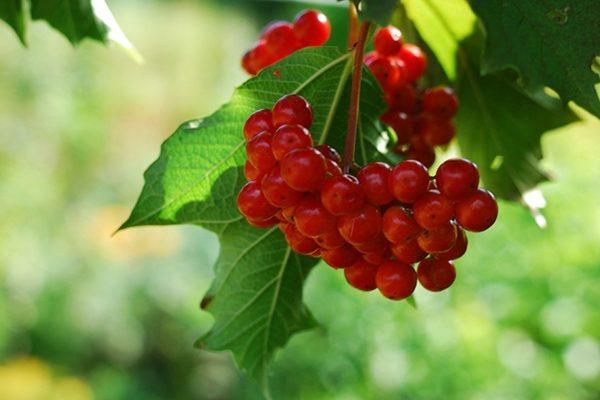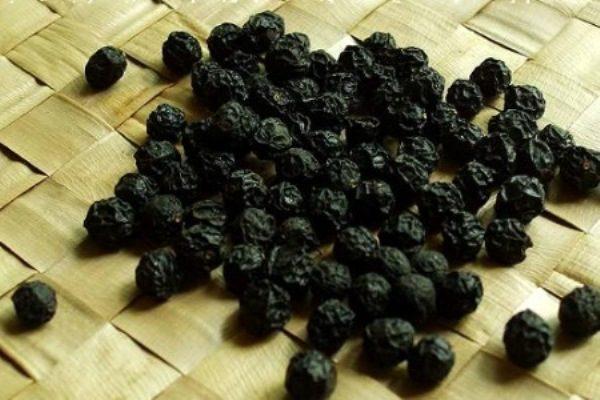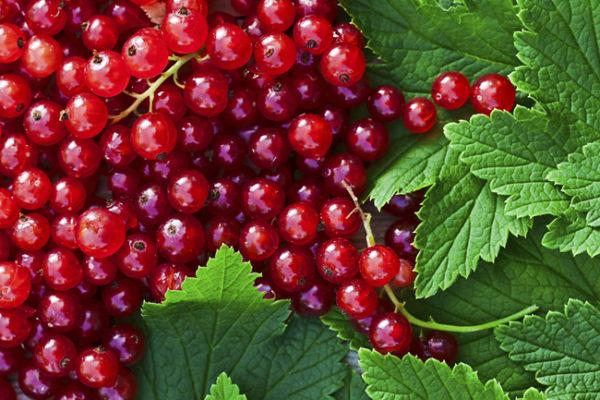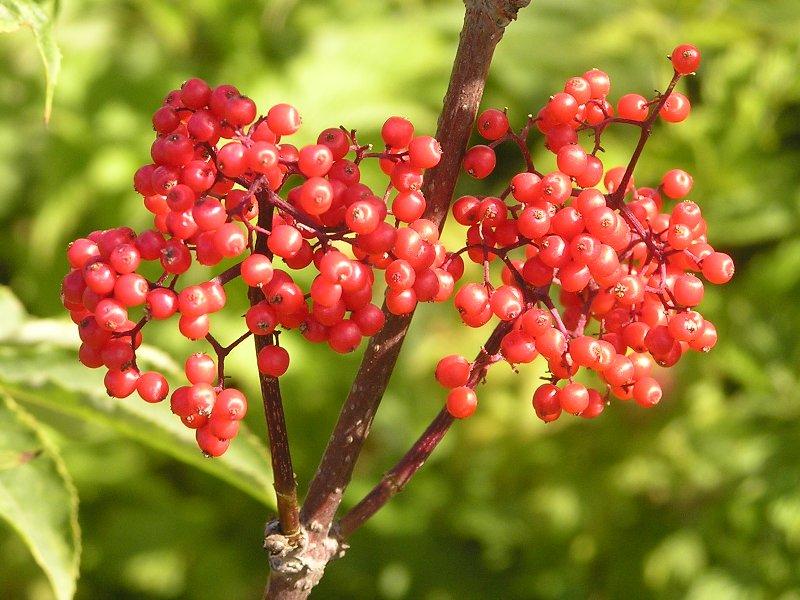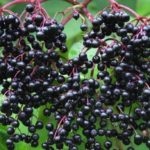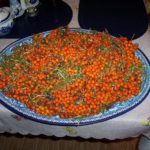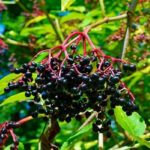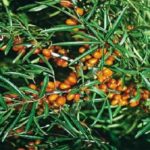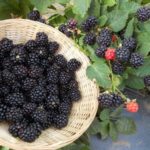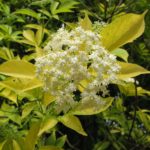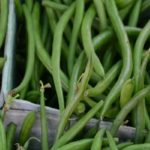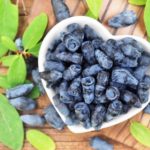Red elderberry is popular among people due to its beneficial properties. The flowers of this plant are actively used in folk medicine - for preparing tinctures for colds, flu, sore throat, diabetes, hormonal imbalance, burns and skin diseases. It is important to understand when to harvest red elderberry, since the preservation of its properties depends on proper harvesting.
Picking times for elder flowers
Elderberries are harvested during the period of full flowering. The best time is considered to be when not all the flowers have opened yet.Fully opened inflorescences have the greatest number of beneficial properties that are valued in folk medicine. Flowers should be collected in warm and dry weather.
When are the berries picked?
Unlike black elderberries, red elderberries have an unpleasant taste. Unripe fruits are toxic and should not be eaten.
Elderberry fruits are harvested after full ripening - at the end of August or September.
It is important not to miss the moment when the berries are fully ripe. Ripe fruits have elasticity and density. If you are late in picking, the berries will become wrinkled, semi-dry and unsuitable for use, as they will lose most of their beneficial properties. Red elderberries should be picked and dried in whole clusters.
Bark collection
In addition to flowers and berries, elderberry bark also has beneficial properties. It is collected in April, from two-year-old branches, during the ripening of the buds. Only the top dark layer of bark is cut off. After collection, the bark should be dried in a ventilated place.
Required Tools
To harvest, you will need sharp scissors or pruning shears, as elderberries are harvested in clusters. The blades must be sharpened so as not to harm the plant. It is better to collect the crop in a basket or tray so that the harvest can be distributed evenly. To store dried crops, you will need sealed glass containers that do not allow moisture to pass through.
Collection technique
Elderberry flowers should be collected during the blooming period, separating them from the peduncles. After picking, the flowers should be dried and passed through a sieve. Flowers should be stored at air humidity of no more than 14 percent.
Ripe fruits are collected in clusters. After harvesting, the bunches must be spread out in a thin layer and dried in air.After this, the fruits are dried in a dryer or oven. Dried fruits must be separated from the branches.
The bark is collected from branches that are two years old. It is cleaned, the top layer is scraped off, separated and dried in a dryer or oven. The roots of the plant are collected in late autumn. They are dried in the same way and ground to a powder consistency.
Storage rules
Collected flowers can be stored for 24 months at an air temperature of +5 to +25 degrees Celsius and air humidity of no more than 65%. Dried fruits can be stored for no more than six months. The bark of the plant can be stored for three years, and the roots of elderberry can be stored for five years.
Application
Red elderberry, unlike black elderberry, is not used in official medicine, but is widely used in folk medicine. Also, despite the fact that the berries of the plant have worse taste than black elderberry, and unripe fruits are considered poisonous and eating them can cause poisoning, the berries can nevertheless be used for culinary purposes after heat treatment.
In folk medicine
The flowers and berries of red elderberry serve as the main component in the preparation of many medicinal tinctures that help with bronchitis and rheumatism. A decoction of the roots of the plant is used as a laxative and diuretic.
For stomach ulcers, three times a day before meals, drink one hundred milliliters of elderberry infusion and eat vegetable oil. The infusion is taken for a month and the course is repeated two weeks later if necessary.
An infusion of the plant's bark helps treat bronchial asthma.
One tablespoon of crushed roots per 300 milliliters of boiling water is infused for two hours and taken three times a day, half a glass.
Elder flower tincture is used to treat rheumatism, headaches and colds. Two teaspoons of crushed flowers are poured with boiling water in an amount of 250 milliliters and left for 10 minutes. Drink 100 milliliters of infusion twice a day.
In cooking
Red elderberries produce tasty and healthy juice that can be prepared for the winter. To prepare it, you need to scald the berries, rub them through a sieve and bring the resulting juice to a boil. You can eat no more than 50 grams of juice per day.
The juice has a strengthening effect on the immune system and helps restore natural metabolism.
Fresh ripe fruits of the plant are used to make preserves, jams and purees. The puree is made from berries and sugar, in a two to one ratio. The berries are ground together with sugar and put on fire. Then the resulting mixture should be brought to a boil, placed in jars and pasteurized.
Jam is made from berries and sugar in a one to one ratio, with the addition of a small amount of clean water. The berries are crushed and boiled with sugar and water until thickened.

